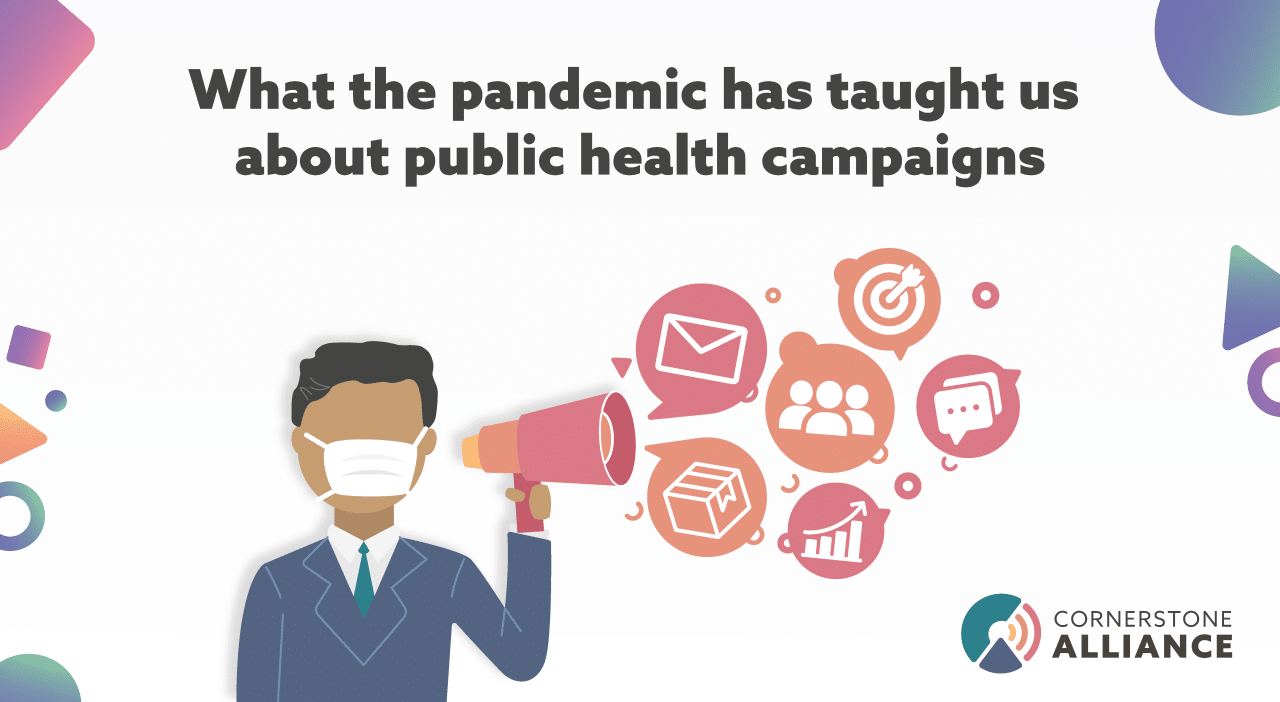Australia prides itself on its cultural diversity, with almost 28% of the population being born overseas (Australian Bureau of Statistics 2022), and almost 23% using a language other than English at home (Australian Bureau of Statistics 2022). However, the COVID-19 pandemic has raised some important lessons for public health officials and marketing personnel about the accessibility of public health information, especially to those who are culturally and linguistically diverse (CALD).
The English language is not inclusive
While enjoying a shared language makes communication effortless and inclusive, it is unrealistic to illustrate Australia without the diversity of languages spoken within communities, and therefore the potential for language barriers to arise.
Having translated public messages released in a timely manner is essential to promoting health directives to multicultural communities. However, there have been countless examples where messaging has been poorly translated, creating confusion and distrust amongst CALD communities (Dalzell 2020).
Language encompasses more than just words; it is a combination of tone, grammar, syntax, and cultural sensitivity. Despite the need for up-to-date public health messages, the potential for consequences to arise in the event of a ‘laughable’ translation cannot be overlooked.
This is why it is imperative that translated material be thoroughly checked before publication.

In Victoria, a poster promoting the use of facemasks featured information in both Farsi and Arabic – two entirely distinct languages. (ABC News: Emma Machan)
The importance of intercultural understanding
While translating public health information is necessary, translated material alone without context or cultural sensitivity cannot lead to changes in behaviour during a pandemic.
Public health messaging directed to CALD communities must directly take into account the audience’s existing understanding of the public health issue at hand, the context in which the translated information will be used and wider cultural factors to develop effective messaging and encourage compliance.
For example, health messages should take into consideration events that are so entrenched in cultural norms like weddings and large-scale religious/cultural ceremonies when addressing high-risk gatherings (Independent Scientific Pandemic Insights Group on Behaviours 2020).

These posters (from Madagascar and Japan) indicate the need to consider various when creating communication products for different cultural groups, including the use of visuals, colours and cultural adaptations. (Benski C, Goto A, Creative Health Teams and Reich MR 2020).

Community partnerships are key
In the ongoing pandemic, determining the accessibility of translated content, and in many cases facilitating the distribution of translated content has largely been taken up by the many community organizations in the country.
Community organizations are the backbone of the multicultural sphere, providing practical support to new migrants, an inherent and familiar social group, and the opportunity to maintain a cultural connection from thousands of kilometres away.
Working directly with community groups, both directly and through respected community leaders through formal partnerships and collaboration is an effective strategy to ensure that public health information can be delivered from trusted and familiar sources and in a customised manner that makes the information easy to interpret and apply.
Available does not mean accessible
It is crucial to understand that even if content is translated and made free on a wide range of platforms, does not mean that it is accessible.
This pandemic brought with it a lack of content in simple or easy-to-read formats, meaning community members with limited language capabilities in even their own language were not catered to (Karidakis et. al 2022).
Public health information involves taking a complicated and technical subject and making it concise, and easy to absorb and apply, and this should not differ when it comes to translated content.
Furthermore, any form of content is expendable without mediums to carry it, and the effectiveness and accessibility of these mediums play a crucial role in the dissemination of information.
An overreliance on digital mediums, as well as a narrow selection of information platforms, may exclude CALD individuals with lacking technological literacy and access, as well as individuals with limited understanding of the public health authorities.
This is why a multiplatform approach to information distribution should be applied, utilising the mediums relied upon by community members. This ensures that information can actually be delivered, absorbed, and applied effectively.
If we are to take anything from the pandemic then we must be more aware of the effectiveness of public health campaigns on our multicultural communities.
Authorities and institutes must be prepared and willing to facilitate accurate translations of public health material to cater to as many cultural groups as possible.
Furthermore, messaging can be made even more effective when the audience’s cultural context and lifestyle can be depicted in directives and catered to. This can be achieved by working closely with community groups and their leaders to facilitate targeted and considerate distribution of information. This can address the issue of crucial information being too challenging to interpret and/or access via a suitable medium.
Let’s hope the lessons from the pandemic can be used to improve the practices of public health campaigns to come.
References:
Australian Bureau of Statistics 2022, Cultural diversity of Australia, ABS, viewed 13 October 2022, <https://www.abs.gov.au/articles/cultural-diversity-australia>.
Benski C, Goto A, Creative Health Teams and Reich MR 2020, ‘Developing Health Communication Materials During a Pandemic’, Frontiers in Communication, vol. 5, viewed 13 October 2022.
Bradley, D, Noonan, P, Nugent, H & Scales, B 2008, Review of Australian higher education, Australian Government, Canberra.
Dalzell, S 2020, Government coronavirus messages left ‘nonsensical’ after being translated into other languages, ABC News, viewed 13 October 2022, < https://www.abc.net.au/news/2020-08-13/coronavirus-messages-translated-to-nonsense-in-other-languages/12550520>.
Independent Scientific Pandemic Insights Group on Behaviours 2020, Public Health Messaging for Communities from Different Cultural Backgrounds, Government of the United Kingdom, London).
